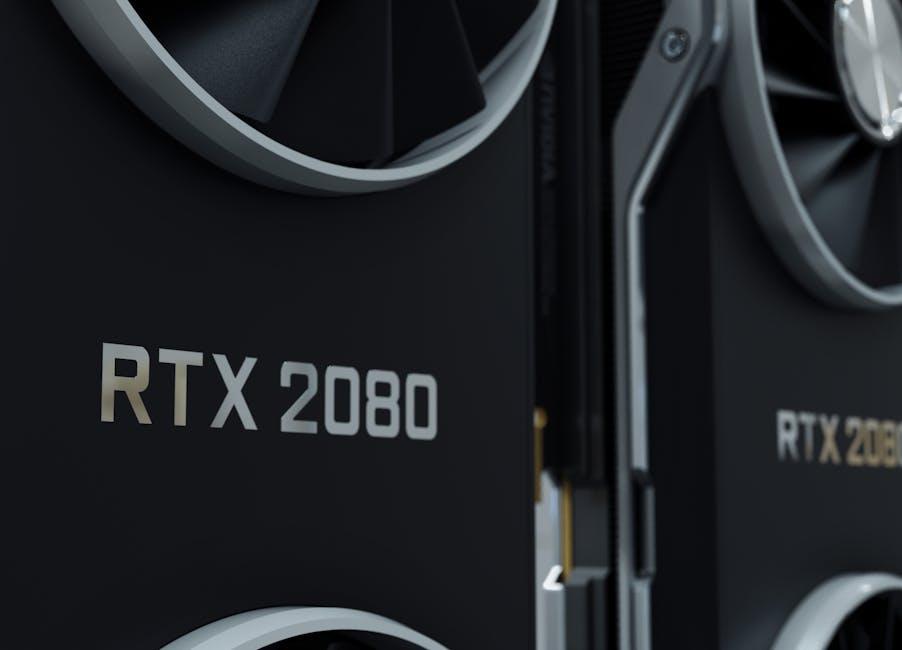How Neural Rendering Enhances Visual Fidelity in Games
In the fast-evolving world of video games, delivering visually stunning and immersive experiences is paramount. With the rise of artificial intelligence and machine learning, neural rendering has emerged as a game-changing technology that significantly enhances visual fidelity. This article explores what neural rendering is, how it works, and why it’s transforming the way game developers approach next-gen graphics.
What Is Neural Rendering?
Neural rendering blends concepts from traditional graphics rendering with deep learning algorithms, especially neural networks, to produce lifelike images and animations. Unlike conventional rendering pipelines that rely heavily on fixed mathematical models, neural rendering uses AI to simulate light, textures, and materials more realistically – often in real-time.
At its core, neural rendering leverages trained neural networks to predict how scenes should look from certain viewpoints, enhancing details, reducing noise, and sometimes generating entire visuals through learned patterns rather than brute-force computation.
How Neural Rendering Works in Games
Most modern neural rendering approaches in games involve feeding data such as low-resolution inputs, depth maps, or partial scene information to neural networks trained on vast datasets of real-world images or prior rendered frames. The model then extrapolates or upscales visuals, reconstructing them into high-fidelity frames that are closer to reality.
Key Components of Neural Rendering
- Neural Networks: Deep convolutional networks predict light behavior, textures, and shadows.
- Image Synthesis: Combining inputs to generate photorealistic images in real-time.
- Upscaling & Denoising: Enhancing lower-quality frames or noisy renders for clarity and sharpness.
- Scene Understanding: Models interpret geometry and lighting to recreate realistic visuals.
Benefits of Neural Rendering for Visual Fidelity
Neural rendering offers multiple advantages that push game graphics beyond previous limitations. Here are some primary benefits for developers and players alike:
- Higher Realism: Produces more believable lighting, texture detail, and complex visual effects using AI-driven approximations.
- Enhanced Performance: Requires less brute-force computing power than traditional ray tracing, making high-quality graphics more accessible.
- Real-Time Adaptability: Neural models can rapidly update visuals based on player perspective changes or dynamic lighting.
- Efficient Texture Scaling: Automatically upscales low-res textures while preserving detail, minimizing storage needs.
- Reduced Rendering Costs: Cuts down on expensive calculations by approximating results with neural inference.
Real-World Case Studies of Neural Rendering in Games
Several groundbreaking titles and studios have embraced neural rendering techniques, bringing them into mainstream gaming:
| Game/Studio | Application | Impact |
|---|---|---|
| Cyberpunk 2077 (modded) | AI-powered upscaling and denoising mod | Sharper textures and smoother lighting effects on mid-range PCs |
| Epic Games – MetaHuman Creator | Neural network-based facial rendering | Ultra-realistic character expressions and skin details |
| Unity Research | Neural radiance caching for indirect lighting | Faster global illumination with better quality in real-time |
Practical Tips for Developers Using Neural Rendering
If you’re a game developer or a graphics programmer, here are some practical recommendations to successfully implement neural rendering:
- Start Small: Integrate neural rendering on secondary effects like reflections or texture upscaling before full-scene deployment.
- Leverage Pre-Trained Models: Use existing AI models tailored for rendering to save time on training from scratch.
- Optimize Performance: Balance neural network complexity with hardware limits-heavy models can bottleneck framerate.
- Combine with Traditional Methods: Hybrid approaches utilizing rasterization or ray tracing alongside neural inference often yield the best results.
- Test on Target Hardware: Ensure the neural rendering pipeline scales well, especially on consoles or lower-end GPUs.
How Neural Rendering Improves Player Experience
By boosting graphics quality without sacrificing performance, neural rendering elevates gaming experiences in several meaningful ways:
- Immersion: More detailed environments and lifelike characters make players feel truly part of the virtual world.
- Accessibility: Achieving high visual fidelity on moderate hardware broadens the player base.
- Smooth Gameplay: Intelligent denoising and upscaling maintain consistent frame rates for enjoyable play sessions.
- Dynamic Visuals: Real-time neural effects react naturally to gameplay changes, enhancing realism continuously.
Conclusion: The Future of Visual Fidelity is Neural
Neural rendering represents a fascinating frontier in video game graphics technology. By harnessing the power of AI-driven neural networks, games achieve unprecedented levels of visual fidelity while improving performance and efficiency. As hardware and AI models continue to advance, neural rendering will become an essential tool for developers aiming to craft truly immersive and breathtaking gaming worlds.
Whether you’re a game creator or an enthusiast, understanding and embracing neural rendering now can give you a front-row seat to one of the most exciting evolutions in digital entertainment. Stay tuned as this transformative technology continues to redefine the boundaries of realism and interactive storytelling.











